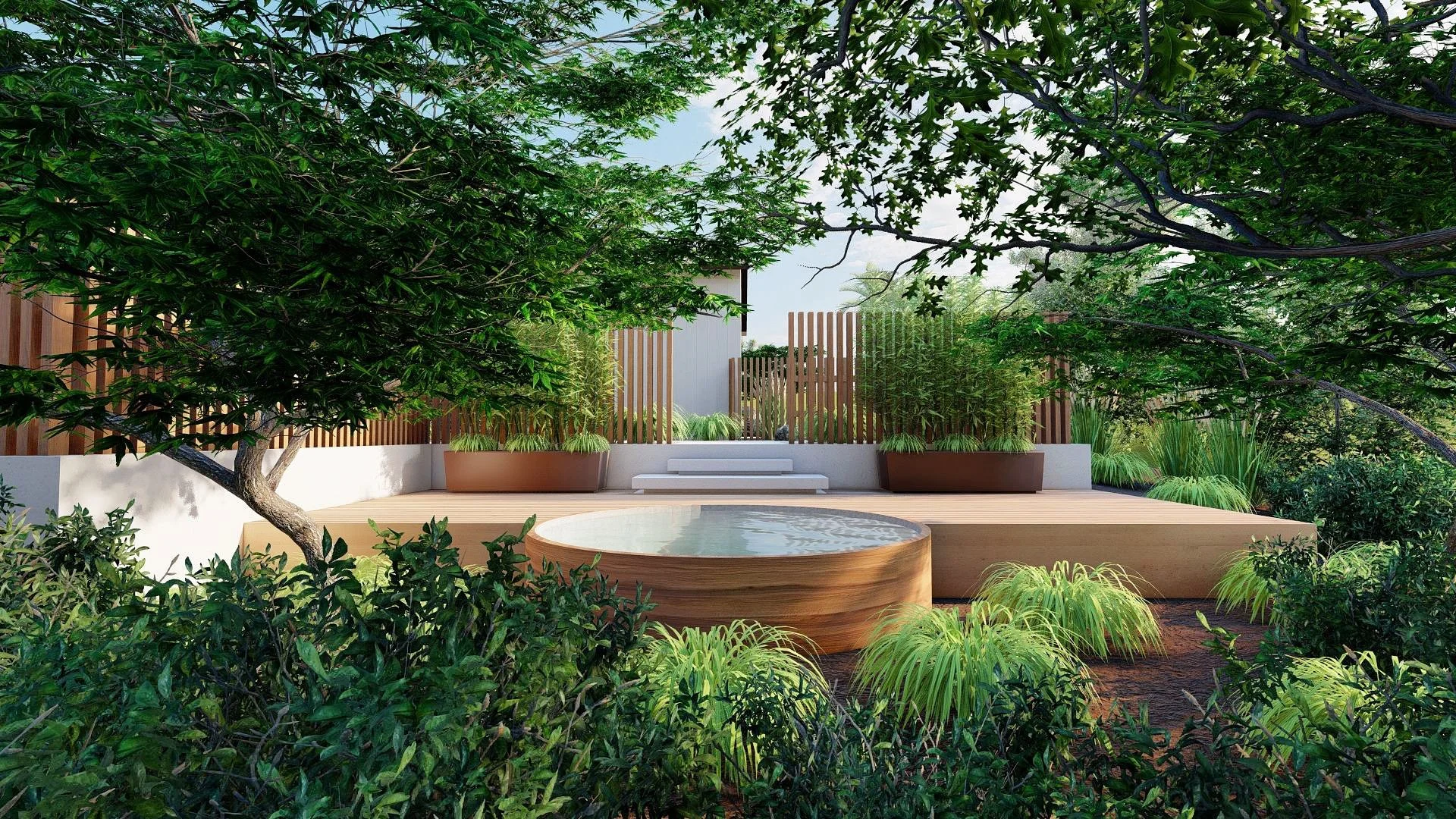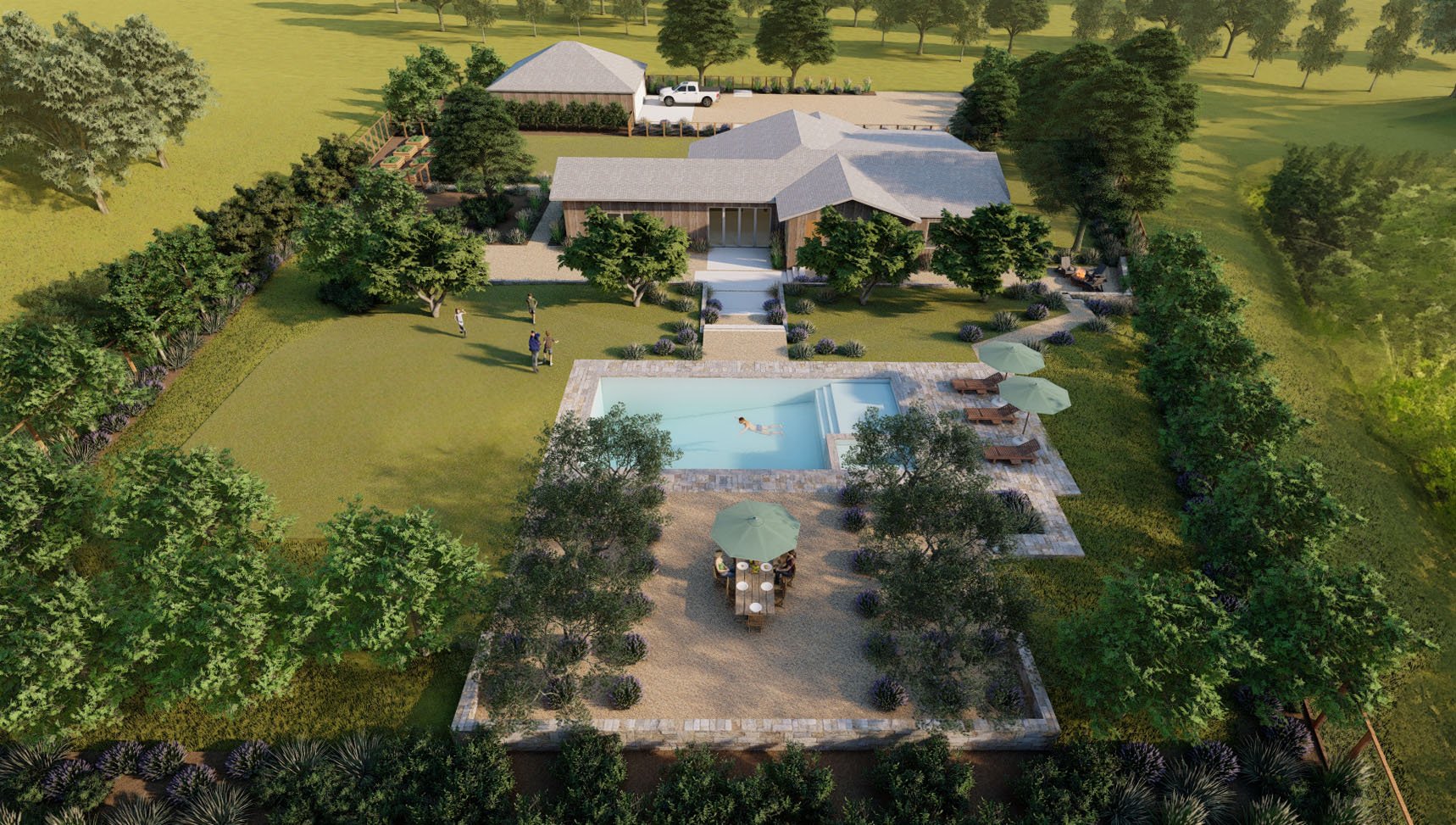A 3-D Lumion rendering of a residential landscape design in San Luis Obispo County.
In landscape design and architecture, conveying a client's vision while ensuring precision in design details is paramount. With advancements in technology, particularly the integration of 3D modeling and Lumion, designers now possess a powerful tool to elevate their craft and exceed client expectations. Let's delve into why 3D modeling has become indispensable in the field, its myriad benefits, and the types of clients who stand to gain the most from this innovative approach.
Precision in Design
Gone are the days of relying solely on two-dimensional blueprints or sketches to articulate design concepts. While traditional methods served their purpose, they often failed to communicate landscape design's intricate details and spatial nuances fully. Enter 3D modeling—a game-changer that allows designers to create immersive, lifelike representations of their visions.
A 3D landscape rendering showcasing the beautiful material selections for a raised deck, spa, and privacy screen.
Through 3D modeling software, designers can meticulously craft every aspect of a landscape, from the placement of trees and shrubbery to the contours of the terrain. This level of precision not only ensures accuracy in execution but also facilitates better communication between designers, clients, and contractors. By visualizing the design in three dimensions, all stakeholders can grasp the project's scope more clearly, minimizing misunderstandings and streamlining the decision-making process.
Bringing Your Vision to Life
One of the most significant advantages of 3D modeling in landscape design is its ability to bring conceptual ideas to life. Clients often struggle to envision the outcome based solely on drawings or verbal descriptions. However, with 3D models, they can step into a virtual representation of their future landscape, allowing them to explore every facet of the design in vivid detail.
Whether it's visualizing the placement of a patio, experimenting with different plant species, or observing how sunlight interacts with the space throughout the day, 3D modeling empowers clients to participate in the design process actively. This level of engagement fosters a sense of ownership and confidence in the final product, ultimately leading to greater satisfaction upon project completion.
An aerial perspective of a residential courtyard. 3D allows for a better understanding of scale and the materiality of the space.
Benefits Across Diverse Clientele
While the advantages of 3D modeling are universal, certain types of clients stand to benefit even more from this innovative approach:
Residential Clients:
Homeowners seeking to transform their outdoor spaces into havens of beauty and functionality rely on landscape designers to bring their dreams to fruition. 3D modeling enables these clients to visualize how their gardens, patios, and pathways will integrate seamlessly with their existing architecture, ensuring a cohesive and harmonious design.
Commercial Developers:
From corporate campuses to retail centers, commercial developers understand the importance of creating attractive outdoor environments that enhance their properties' overall appeal. 3D modeling allows developers to explore various design options, assess the impact of landscaping on foot traffic and accessibility, and make informed decisions that align with their aesthetic and budgetary goals.
Municipalities and Urban Planners:
Effective landscape design is essential in urban environments for fostering community engagement, promoting sustainability, and maximizing the use of public spaces. Municipalities and urban planners can leverage 3D modeling to visualize proposed park designs, streetscapes, and revitalization projects, soliciting feedback from residents and stakeholders before breaking ground.
A clear winning investment
In the ever-evolving landscape design industry, embracing technology is critical to staying ahead of the curve and delivering exceptional results. 3D modeling enhances design precision and accuracy and empowers clients to participate actively in the creative process. By harnessing the power of visualization, landscape designers can transform concepts into tangible realities, enriching lives and landscapes alike. As we continue to push the boundaries of innovation, one thing remains clear: 3D modeling is not just a tool—it's a catalyst for inspiration, collaboration, and unparalleled creativity in landscape design and architecture.




